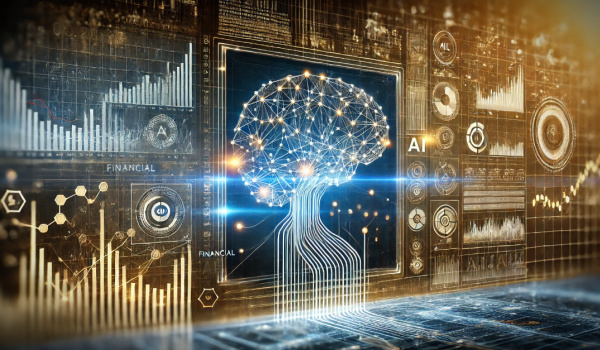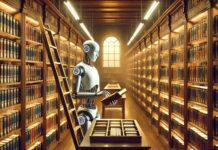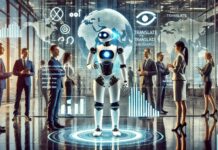Each week we find a new topic for our readers to learn about in our AI Education column.
“You keep using that word, I do not think it means what you think it means” – Inigo Montoya, “The Princess Bride”
When I hear the word “model,” it conjures up two completely different sets of images, both linked to the physical world. One is the idea of models from my youth, the smell of airplane glue and the sound of tiny plastic pieces being snapped out of their packaging and the deep, meditative focus of building. The other is the world of popular fashion and its physical representations during my formative years, the grace and beauty of figures like Cindy Crawford, Tyra Banks and Heidi Klum.
In AI, however, a model is something quite different. “AI model” is a term that has become widely adopted and used but infrequently and often poorly defined. Any time a large group of people—like journalists—begin writing about a new technology topic, they inevitably adopt some of the language of technologists and theoreticians who have been working for years, if not generations, on the topic—without thinking about the meaning of their words. So it has been with “AI model.”
It wasn’t any single news item or release that brought us to this topic for AI Education this week, then, but the collective weight of weeks, months and years of writing about the topic, seeing the term “AI model” used over, and over, and over again, without it being clearly defined.
What Do We Mean When We Say “AI Model?”
An AI model is a computer program that has been trained on data to recognize patterns and/or make decisions without human intervention, according to IBM. An AI model is software that performs a task using knowledge or skills it has “learned” from analyzing what are often tremendous data sets. Algorithms, simplified, procedural rules for addressing specific problems and making specific decisions in a systematic manner, are the building blocks of AI models.
In reality, this isn’t too different from how any computer program, or software, works. It is designed to take a set of inputs, usually delivered by a human end-user, run those inputs through a process or processes to produce a desired result that the end-user receives and can then further manipulate. When we think about a computer program conceptually, it doesn’t have to be any more complicated than the addition sign on a calculator: input two numbers, separated by the addition sign, and the calculator combines them for you without any more intervention.
The essential difference between simple software and artificial intelligence is that AI models are asked to perform complex tasks, much more complex than simple addition, and they are shown how to perform such tasks by being exposed to large volumes of data that are often unstructured. AI is asked to reason, assign weights and values and priorities, and to process language.
What Are Some Types of AI Models
As artificial intelligence proliferates and becomes more sophisticated, different classifications of AI models have emerged, and new ones are being developed all the time. Thus, we’re only going to offer a few basic examples of types of AI models rather than attempt to create a comprehensive list here.
Machine learning models are sets of algorithms designed to be capable of learning from processing data. These models can be broken down into several different subgroups. Supervised machine learning means that models learn from data that has been prepared and processed for training the AI—the data is prepared in a way to teach the model to perform a specific task in a specific way, and to expect structured inputs in the future. Unsupervised learning means that model itself is expected to find patterns and relationships over time in unstructured data without human guidance. In reinforcement learning, the models are taught by interacting within an environment and receiving positive and negative feedback.
Natural language processing models are intended to understand human language as it is spoken and written, not as inputs at a command prompt. Computer vision models help interpret visual information from a real-world setting or several settings, or from images and videos.
Deep learning is a more sophisticated brand of machine learning where models are built on artificial neural networks capable of learning more of the hierarchies and internal relationships in sets of data. Deep learning models help power much of the natural language processing and verbal generative AI, like more advanced chatbots, currently available today.
While AI models, in general, are focused on finding patterns, machine and deep learning models, more specifically, are designed to make predictions and perform tasks.
Open Versus Closed
One more word on AI model classification: there are fully open-source AI models and fully closed AI models, and everything in between. An open-source AI model means it is publicly available. A fully open model means that anyone can use, modify or distribute that model. A fully closed model, on the other hand, is only available to particular people or groups.
Open models are thought to promote more innovation and offer more accessibility for different groups of people at varying levels of computer fluency. They’re also less prone to certain types of biases. However, open-source models also introduce security and maintenance challenges—if anyone can access, use and manipulate a model, then theoretically they can train a model on bad or suboptimal data to become a bad actor.
There are different levels of openness in AI models. A developer may choose to make public all of the properties of the model that make it work so that users and programmers can better understand what the model does and how. A developer may choose to go further and make the source code—the programming itself—openly available to allow anyone to inspect, modify and distribute it. Developers may also to varying extents reveal the data sources their models were trained on—such openness should be the baseline for whether or not a user can have confidence in a model’s output.
Closed models, on the other hand, may be the key to keeping artificial intelligence safe and compliant as it spreads through more heavily regulated industries like finance and health care.







